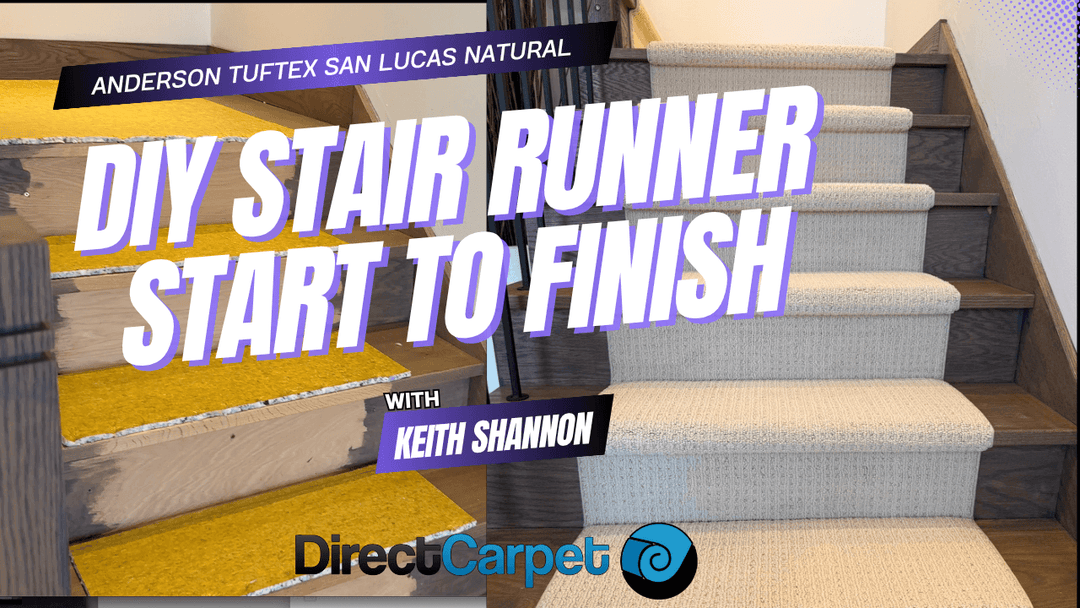Best Stair Runner Calculator
Effortlessly Measure Your Staircase Runner Needs

When planning your stair runner project, it’s crucial to understand key stair terminology and local building codes to ensure safety and functionality. Here are some essential terms:
-
Stair rise: The vertical distance between two consecutive treads.
-
Stair run: The horizontal distance between two consecutive treads.
-
Stair tread: The horizontal part of the step that you walk on.
-
Stair landing: A flat surface at the top or bottom of a flight of stairs.
-
Stair width: The horizontal distance between the two stringers (the vertical beams that support the stairs).
-
Stair stringer: A vertical beam that supports the stairs.
-
Riser measurement: The vertical distance between two consecutive treads.
-
Tread depth: The horizontal distance between the front and back of a tread.
-
Stringer length: The length of the stringer, which is typically the same as the total rise of the stairs.
Click on the Calculator to use!
Building codes vary by location, but most require that stairs have a minimum width of 36 inches, a maximum riser height of 7.75 inches, and a minimum tread depth of 10 inches.
Always check with local authorities to determine the specific building codes in your area to ensure compliance and safety.
-
Familiarize yourself with key terms: stair width, stair stringer, minimum length, number of steps, last riser, total rise, stair landing, and stringer length. The 'stair rise' is the vertical distance from one step to the next. The 'stair run' is the horizontal distance from the front of one step to the front of the next step.
-
Learn about the different types of stairs and their specific requirements.
-
Discover how to determine the correct stair runner width and stair runner length for your project.
-
Understand the role of the stair runner calculator
Measuring Your Stairs
-
Measure the vertical distance between each step (riser height) and the horizontal distance (tread depth), taking into account the tread thickness.
-
Measure the stair treads
-
Determine the total rise and total run of your stairs.
-
Calculate the number of steps and the last riser measurement.
-
Learn how to measure for a stair runner on a new or old staircase.
-
Understand the importance of accurate measurements for a proper fit.
Choosing the Right Stair Runner
-
Determine the width of the stair runner based on personal preference and the staircase.
-
Consider the material and cost of the stair runner.
-
Learn about the different types of stair runners and their benefits.
-
Understand the importance of choosing a stair runner that meets local building codes.
-
Discover how to calculate the cost of stair carpet and determine the best option for your budget.
Stair Calculator Basics

-
Learn how to use a stair calculator to determine the dimensions of the carpet needed.
-
Understand the importance of inputting accurate measurements.
-
Discover how to calculate the length and width of the carpet needed.
-
Learn how to use the calculator to determine the carpet area and estimated cost.
Benefits of Using a Stair Runner Calculator
Using a stair runner calculator can significantly streamline your project, offering several key benefits:
-
Accurate measurements: A stair runner calculator takes into account the unique dimensions of your stairs, including the rise, run, and tread depth, ensuring precise measurements.
-
Cost savings: By calculating the exact amount of carpet or flooring needed, you can avoid overbuying materials, which helps save money.
-
Time savings: A stair runner calculator eliminates the need for manual calculations and measurements, saving you valuable time.
-
Increased safety: Ensuring that your stairs have the correct amount of carpet or flooring reduces the risk of slips and falls, enhancing overall safety.
Incorporating a stair runner calculator into your planning process can make your project more efficient and cost-effective, while also ensuring a safer staircase.
Stair Tread and Riser Measurements
-
Measure the stair tread and riser to determine the correct measurements, ensuring to account for the tread thickness.
-
Understand the importance of accurate measurements for a proper fit.
-
Learn how to calculate the tread depth and riser height.
-
Discover how to use the measurements to determine the correct stair runner size.

Stair Runner Materials and Costs
When it comes to choosing the right material for your stair runner, there are several options to consider, each with its own set of benefits and price points.
Wool is a popular choice due to its durability and luxurious feel, but it tends to be on the higher end of the cost spectrum.
Synthetic fibers, such as nylon and polyester, offer a more budget-friendly alternative while still providing good durability and a wide range of styles and colors.
Natural fibers like sisal and jute are eco-friendly options that add a unique texture to your stairs, though they may require more maintenance.
The cost of your stair runner will largely depend on the type and quality of the material you choose, as well as the quantity needed to cover your stairs.
For instance, wool stair runners can range from $20 to $50 per square yard, while synthetic options might cost between $10 and $30 per square yard.
Natural fiber runners typically fall somewhere in between, depending on the specific material and weave.
It’s important to balance cost with quality to ensure you get a stair runner that not only fits your budget but also stands up to daily wear and tear. Investing in a high-quality material may have a higher upfront cost, but it can save you money in the long run by reducing the need for frequent replacements.
Common Mistakes to Avoid
When designing and building stairs, avoiding common mistakes is crucial for safety and functionality:
-
Incorrect measurements: Measuring the stairs incorrectly can lead to a poor fit and potential safety hazards. Always double-check your measurements for accuracy.
-
Insufficient support: Failing to provide sufficient support for the stairs can result in structural issues or collapse. Ensure that your stairs are properly supported by sturdy stringers.
-
Non-compliance with building codes: Failing to comply with local building codes can result in fines and other penalties. Always check and adhere to the specific codes in your area.
-
Poor design: A poorly designed staircase can be difficult to navigate and may not meet the needs of users. Consider the overall design and functionality of your stairs to ensure they are user-friendly.
By avoiding these common mistakes, you can create a safe, compliant, and well-designed staircase.
Stair Runner Installation and Maintenance
-
Learn about the installation process for stair runners.
-
Understand the importance of proper installation for a safe and durable stair runner.
-
Discover how to maintain your stair runner to extend its lifespan.
Common Stair Runner Widths and Styles
-
Learn about the common widths and styles of stair runners.
-
Understand the importance of choosing a stair runner that meets local building codes.
-
Discover how to determine the correct stair runner size for your staircase.
Stair Runner Safety and Compliance
-
Learn about the safety considerations for stair runners.
-
Understand the importance of compliance with local building codes.
-
Discover how to ensure your stair runner meets safety and compliance standards.
Frequently Asked Questions
Here are some frequently asked questions about stairs and stair runners:
Q: What is the minimum width of a stair? A: The minimum width of a stair is typically 36 inches, but this can vary depending on local building codes.
Q: What is the maximum riser height? A: The maximum riser height is typically 7.75 inches, but this can vary depending on local building codes.
Q: How do I calculate the number of steps needed for my stairs? A: You can use a stair calculator to determine the number of steps needed for your stairs.
Q: What is the purpose of a stair landing? A: A stair landing is a flat surface at the top or bottom of a flight of stairs that provides a safe place to stand and turn.
Q: How do I measure the tread depth of my stairs? A: You can measure the tread depth by measuring the horizontal distance between the front and back of a tread.
Q: What is the purpose of a stair stringer? A: A stair stringer is a vertical beam that supports the stairs and provides structural integrity.
Q: How do I calculate the stringer length of my stairs? A: You can calculate the stringer length by measuring the total rise of the stairs.
Q: What is the purpose of a stair runner? A: A stair runner is a piece of carpet or flooring that covers the stairs and provides traction and safety.
Q: How do I calculate the amount of carpet or flooring needed for my stairs? A: You can use a stair runner calculator to determine the amount of carpet or flooring needed for your stairs.
By understanding these key aspects, you can ensure your stair project is both safe and compliant with local building codes.















Leave a comment